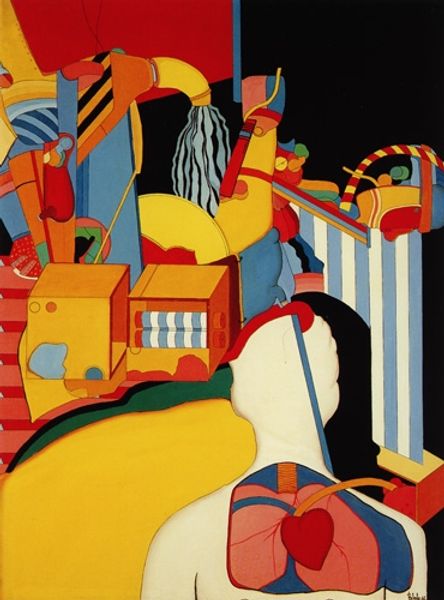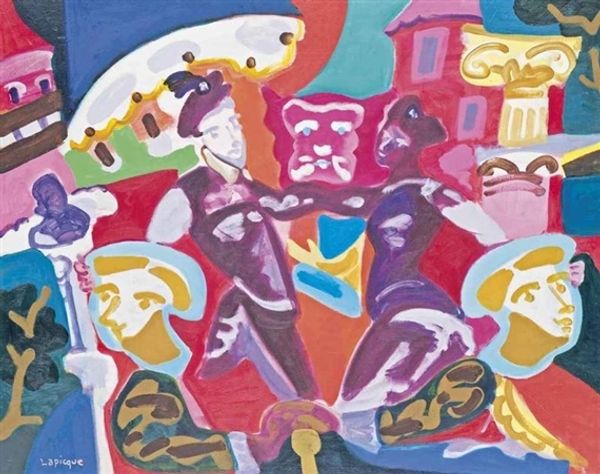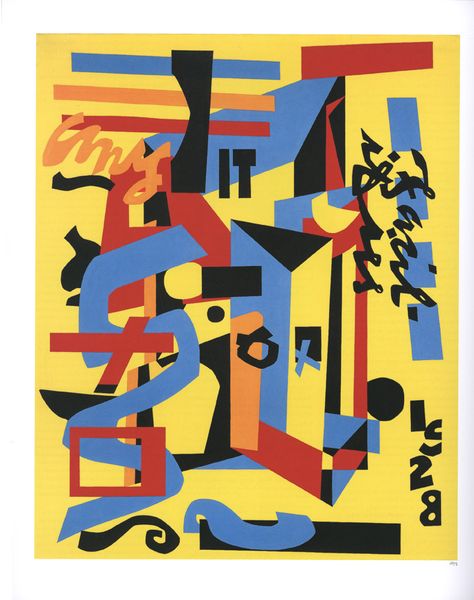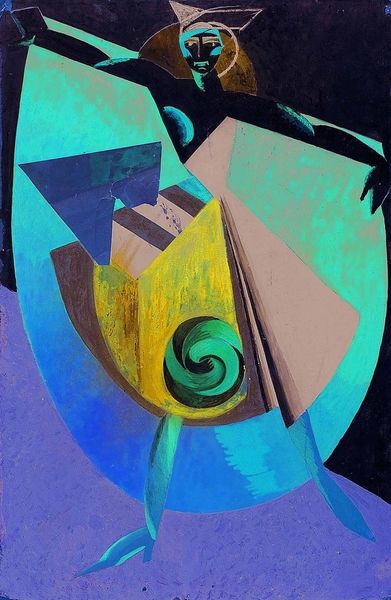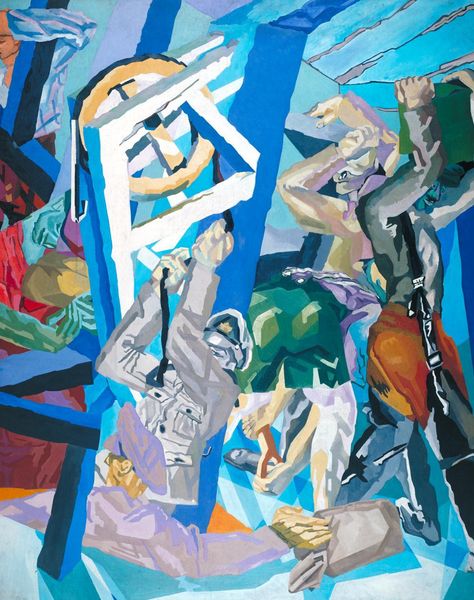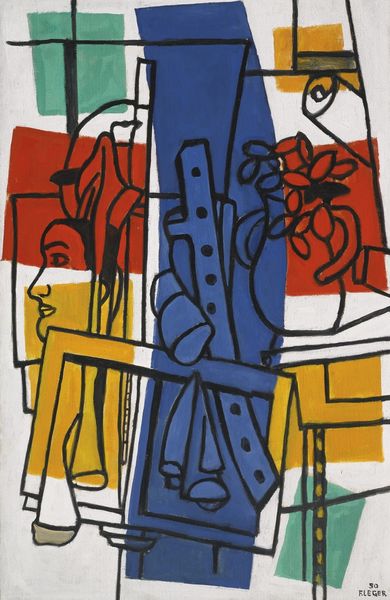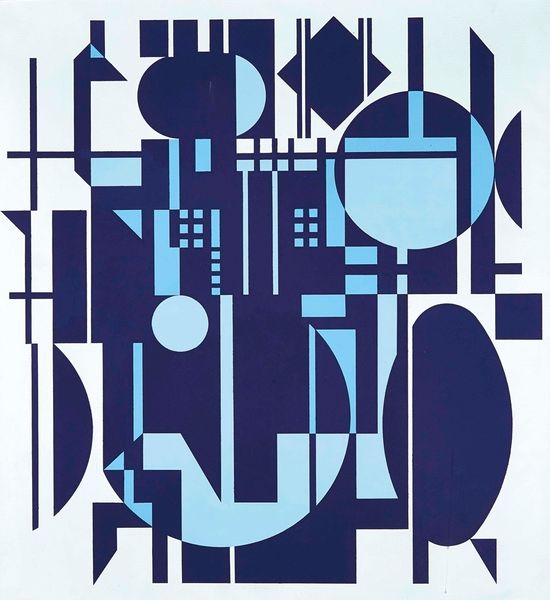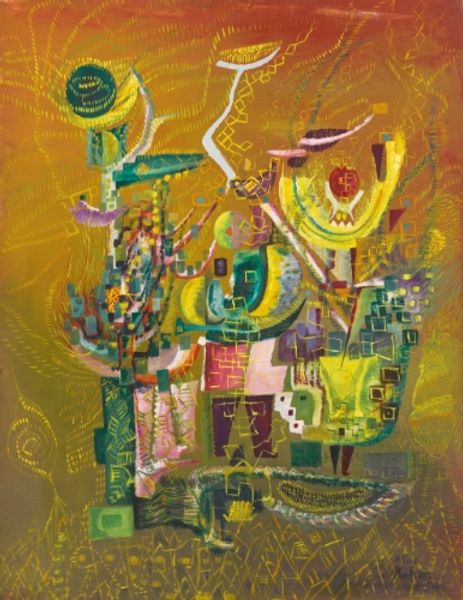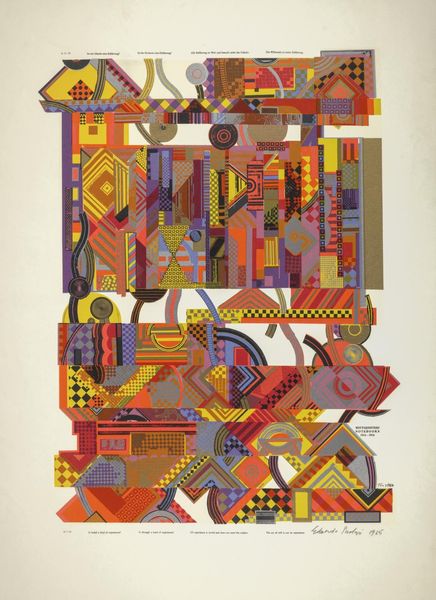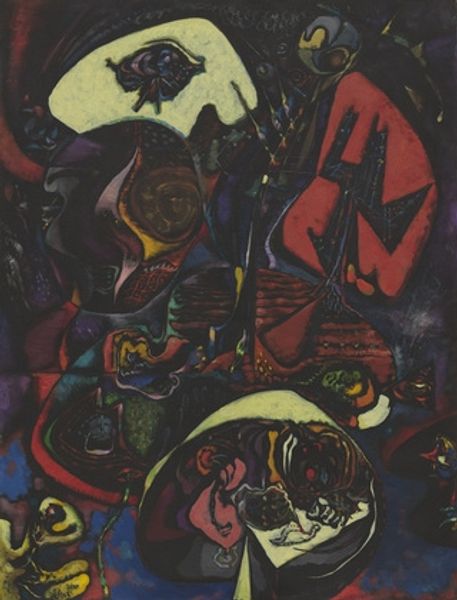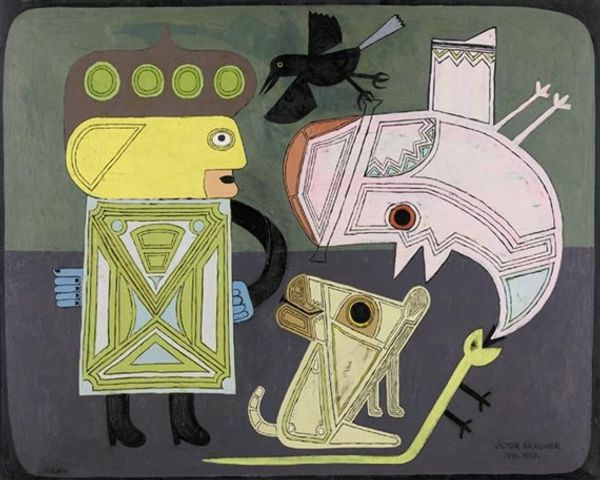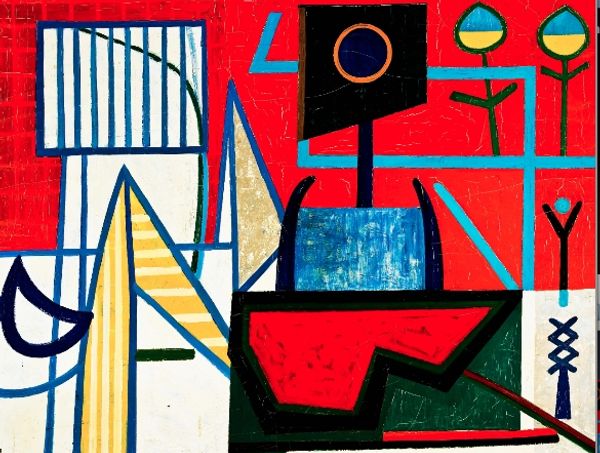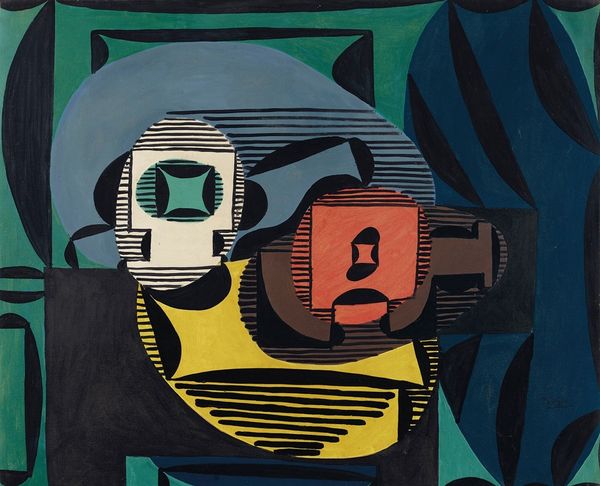
Copyright: Beauford Delaney,Fair Use
Artist: Right, looking at Beauford Delaney’s “Marché, Haïti” from 1963… the first thing that hits me is the color – almost aggressively vibrant. It's acrylic, isn't it? Giving it that sharp edge. I’m immediately taken somewhere. Historian: It’s a wonderful piece to examine, and yes, Delaney rendered it in acrylic. What grabs me is how he represents labor. Consider, 1963 was a pivotal year, smack-dab in the middle of both the Civil Rights movement in the US, where Delaney had struggled deeply with racism, and just a year before Papa Doc declared himself president for life in Haiti. Artist: Exactly! It almost pulsates, that painting. And the way the figures are packed together, you feel the crush of the marketplace, the sheer energy of commerce and life. There's a lovely rhythm! I also notice how he does a naive approach but you clearly identify he wanted to capture the energy. Historian: Absolutely. It’s visually stimulating. And those high contrasts! He really captured the complexities and nuances of cultural identity in postcolonial Haiti in that historical period. It's hard not to feel moved, watching the silent labor from an older world. The people are so beautifully anonymous yet vivid. Artist: It feels less like documentation and more like a hymn, a colorful burst of a moment experienced. It really opens the question of what is "real." Is realism what we see or what we remember or the impression? You also realize he painted that when he was getting ill and had to get institutionalized; one thinks that it shows. Historian: Very true! There’s so much going on. Looking closely, you notice that the figures all seem so dignified even under a workload. It serves as a commentary on how political regimes exploit or empower populations and individuals. Artist: It reminds me of Van Gogh's letters, where he describes seeing colors that weren't really "there," the inner light reflected outwards, isn’t it fascinating? The painting has that "light within". Historian: Well said, and it brings to mind that Delaney was such a complex figure, negotiating being Black and gay in the 20th century art world, so he perhaps had a special appreciation for seeing what wasn't immediately obvious. Artist: I suppose that “Marché, Haïti” becomes more than just an image of a marketplace, it's a vibrant tapestry woven with threads of history, memory, and perhaps a touch of the artist's own soul. Historian: Indeed, a moment of connection frozen in time. A potent blend of color and humanity, all on a single canvas.
Comments
No comments
Be the first to comment and join the conversation on the ultimate creative platform.
